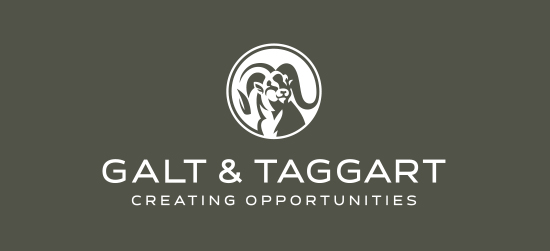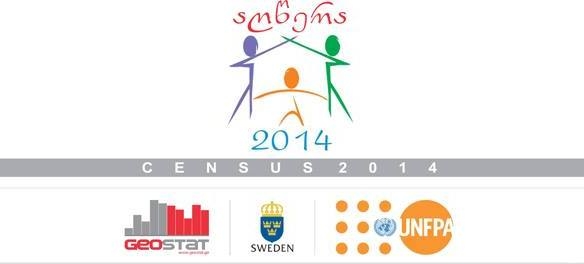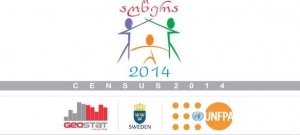Making Sense of the Census Results
Galt & Taggart Research is partnering with Georgia Today on a bimonthly column which will provide analysis of the latest macroeconomic developments in the country and its various business sectors, along with reports on the latest financial results of Georgian Eurobond issuers. This week’s topic: the latest census results.
The process of economic and political transition in Georgia is traditionally associated with success in governance and business reforms, but weak progress in reducing poverty. As a result of the successful reforms, Georgia has generated strong growth rates of Gross Domestic Product (GDP) for the past decade, averaging 6.3% annually from 2003 to 2014. Meanwhile, per-capita GDP, the most useful measure of living standards, jumped 4x to US$3,681 in 2014 from US$920 in 2003. These achievements are even more remarkable given the multiple crises Georgia has faced on its path of economic success – domestic and global crises, the 2008 conflict with Russia, and most recently, regional instability.
It is important to note that Georgia achieved the economic success without generating actual growth in employment – over 2003-2013 the unemployment rate remained in double digits, averaging around 15%, and job creation was weak, even in the double digit growth years. Capital and productivity in the manufacturing and service sectors were the major sources of growth. Job creation was restrained by a skills mismatch: Georgia’s labour market is dominated by low skill and low wage workers, with more than 50% of the workforce engaged in agricultural activities (mainly self-employed), while agriculture accounts for just 9% of GDP. At the same time, average wage earned in agriculture was only 1/3 of that in manufacturing, which employs only 6% of the workforce and accounts for 17.1% of GDP. Moreover, the poverty rate in rural, agricultural areas is 11.7 percentage points higher than in urban centers.
With that lesson in Georgian labour markets in mind, the preliminary results of Georgia’s recent population census, carried out in November 2014, can come as no surprise. The census shows that higher poverty rates and a continued lack of paid jobs in villages have been the major factors affecting Georgia’s demographic profile. According to the census, Georgia’s total population shrank by 14.7%, or 642,000 persons, to 3.7 million persons, from 4.4 million in 2002, when the last census was conducted. Rural areas drove the decline: rural population lost 23.8%, or 495,400 persons, compared to a much smaller drop of 6.3%, or 145,200 persons, in urban areas. As a result, the urban population now holds a 57.4% share of the population (52.3% in 2002), compared to 42.6% for rural areas (47.7% in 2002). It is noteworthy that despite the 14.7% decline in Georgia’s total population since 2002, the age structure of the population is in line with the demographic trends in peer countries.
Faced with economic hardship in rural areas and constrained by insufficient skills with poor job prospects, international migration has helped workers escape the poverty trap and also helped ease domestic labour market pressures. While some workers undoubtedly moved internally from rural to urban centers, globalization and the draw of overseas employment prospects clearly played a key role in Georgia’s changing demographic landscape. Globally, there are over 250 million international migrants, including 1 million from Georgia. As a consequence, the World Bank expects US$ 440 billion in remittance flows to developing countries in 2015. In Georgia workers’ remittances account for 8-10% of GDP annually and have enormous implications for poverty alleviation. The continued international migration of Georgia’s workforce is evidenced by the fact that remittances continued to grow not only from traditional donor countries, but also increasingly from countries that accounted for no inflows as of 2002, like Israel, Belarus, Iraq, and others.
While the census results are disappointing from a certain perspective, it is important to remember that the key measure of economic well-being is GDP per capita. Adjusting for the new population estimate of 3.7 million, Georgia’s GDP per person jumps to US$ 4,400, up from US$ 3,681 based on the 4.5 million officially reported population for 2014. On this measure, Georgia moves up 8 spots on the IMF’s global ranking to 106th out of 189 countries. If Georgia can generate healthy growth rates in the coming years and reach per-capita income of US$ 5,500-7,000, the benefits of economic growth will be shared and felt more widely. To achieve this level of per capita income, Georgia’s output will need to increase by about US$ 5-10 billion in the coming years, and faced with low national savings rates, foreign direct investments can be seen as a major vehicle for achieving better living standards.
Higher per-capita GDP can substantially improve Georgia’s standing on the global corporate map as well. In just one example, a country’s level of per-capita GDP contributes around 25% to its overall sovereign credit rating score; by reaching the US$ 5,501 level, Georgia would qualify for a considerable improvement in its Standard & Poor’s credit rating. This, in turn, would make Georgia a more attractive place for foreign investors, while Georgian companies would get easier access to cheap financing in foreign markets, which would help fill funding gaps, a major constraint that local businesses face.
Although a shrinking population translates to less labour and output, both Georgia’s experience and global success stories offer real hope. The experience of peer countries shows that even a limited labour force need not restrain strong economic outcomes. Estonia’s significantly smaller workforce – 700,000 to Georgia’s 2.4 million (according to the World Bank; 2 million according to GeoStat) – generates economic output 1.6x and per-capita income 5x that of Georgia’s. The contrast is even sharper in Singapore. With a labour force of just 3 million and a 5.4 million population, Singapore’s economy is 20x larger and per-capita income 15x larger than Georgia’s.
Because job creation is immensely important and a key to political stability and sustainable economic development, Georgia must find ways to address its skills mismatch and encourage workers to move into more productive sectors that offer higher wages. This will require a continued improvement in the business environment, supported by liberal economic policy, and access to the means to improve skills. The movement of workers into more productive activities will support growth that generates additional employment. In this regard, the free trade agreement with the European Union, in place since September 2014, is a definite booster for job creation in the coming years, notably in export-oriented sectors. The related improvement in business activity has the real potential to bring an end to the endemically high unemployment that has plagued Georgia for decades.
Given the new opportunities offered by the EU free trade deal, Georgia’s strong history of successful structural reforms, and commitment to market-based growth, fiscal discipline, prudent monetary policy, tax-friendly regime and a pro-business environment free of corruption, improved living standards are definitely achievable for Georgia.
———
Galt & Taggart has established itself as the leading investment banking and investment management services company in Georgia. The company is at the forefront of capital markets development in the country. Our expertise is leveraged through Galt & Taggart’s 5 core activities: investment banking, asset management, wealth management, brokerage, and research.
We are committed to the pursuit of our clients’ best interests and approach every transaction with the aim of securing them the best possible outcome. Our regional focus allows us to provide in-depth services and insightful solutions to our domestic and international clients. Our team consists of over 20 talented professionals with extensive experience in the industry, while our senior professionals are exclusively dedicated to each client.

Galt & Taggart is a wholly owned subsidiary of Bank of Georgia which has a unique insight into the regional market and a solid international investor base. With its institutional backing, Galt & Taggart is well positioned to assist investors in exploring investment opportunities and to offer local and regional companies greater access to both equity and debt capital markets.
For free access to Galt & Taggart Research reports and analysis, please visit gtresearch.ge or contact us at gt@gt.ge.
Eva Bochorishvili (Galt and Taggart)











